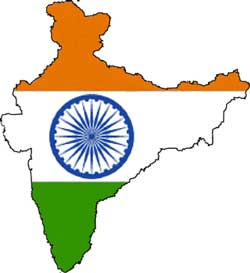India-The most preferred destination for Nepali students

It’s difficult to trace exactly when Nepali students started going to India for education. However, India has been an education hub for the Nepalis ever since the Gurukul system of education started. The trend accelerated with the advancement in the education system after the initiation of formal education some 200 years ago. The flow of Nepali students to the neighbouring country kept on rising since the days of the Rana regime when education used to be the exclusive prerogative of the ruling elite. Those who could afford sent their children to various places in India, with Patna, Banaras, Deharadun, Darjeeling and Gorakhpur being the popular destination for both basic and higher education.
Even after the downfall of the Rana regime, schools in Nepal could not deliver the quality education compared to those in the neighbouring country. The number of Nepali students traveling to India for higher studies has increased recently after the United States, the United Kingdom and Australia—other popular destinations for higher education among Nepali students—adopted tighter visa rules for students.
Apart from it’s proximity to Nepal and affordable tuition fees, the fact that the two countries share similar culture makes parents feel India as a secure destination for their children’s higher education.There has been enormous progress in the education system in India in the last two decades, establishing itself as a leading education hub in Asia. Both the government and the private sector have made huge investments in research, laying emphasis on educated workforce with a commitment to lifelong learning. India leads the world in production of world-class Information Technology (IT) and management professionals, being the second largest education network in the world. Colleges like National Institute of Technology (NIT) and the Indian Institute of Technology (IIT) are considered among the best engineering institutes in the world. A report of the University Grants Commission, the main regulatory body for university education in India, shows that 20 central universities, 215 state
universities, 100 deemed universities and over 16,000 colleges are spread across the country. India is also a country of contrast and vast differences.
While there are very expensive private colleges and universities, there are also relatively low-cost public universities for the low-income group. India is a very diverse country and its people and their culture vary with the change of states. It also attracts thousands of students across the globe providing opportunity to study in a multicultural classroom. Interacting with the people from different cultures teaches tolerance, acceptance of diversity and helps to build close cultural connections which consequently helps in promoting teamwork and confidence.
A world class education system with strong government monitoring makes India a popular destination for Nepali students pursuing higher education. According to Neeta Yogi, coordinator of Global Education Counselling Centre,most of the students going to India prefer Engineering and IT followed by Management and Nursing.
Engineering and IT
Engineering is a lucrative choice for students who have completed their grade 12 with at least second division marks. Though around 10,000 students from Nepal aspire to study engineering every year, the academic institution in the country can hardly take in around 4,000, making India a natural and affordable choice to many. In the last two decades no country in the world has flourished like India in the field of engineering and IT. Home to the renowned academic institutions like IIT, NIT and Delhi University, India has a reputation of producing world class professionals. Many Indian universities have close ties with the industrial sector which provides students exposure to the practical aspect of the study and possibility of job placement. The cost of the four-year programme ranges from Rs 1 million to 1.5 million with lodging and food.
Management:
Both BBA and MBA courses in India are attuned to ensuring that practical and theoretical skills to the students. These programmes enhance a student’s leadership skills through rigorous training, assignments, reports, presentations and group projects all in order to build skills that will be crucial in real life business situation. The courses are designed to develop entrepreneurship in the student so that they can start and run businesses of their own. India is also an attractive destination for other management courses like Bachelors in Hotel and Hospitality Management and Bachelors in Travel and Tourism Manage-ment. The two-year MBA programme costs around Rs 500,000 and over Rs 1 million for four-year BBA.
Nursing
The first nursing college in India was St Stephens Hospital established in 1867 in Delhi, to provide training in nursing to Indian girls. Since then nursing courses have grown in number and quality. Medical Surgical Nursing, Community Health Nursing, Pediatric Nursing, Obstetrics and Gynecological Nursing and Psychiatric Nursing are some of the nursing courses available in India. Due to availability limited seats for nursing students in Nepal, many students choose India, mostly in the souther state of Bangalore for their nursing courses. On an average, the students pay around Rs 700,000 to Rs 1 million, including room and board, to complete the nursing studies in India.
source: The Kathmandu post,12 June 2013
Posted on: 2013-12-06































